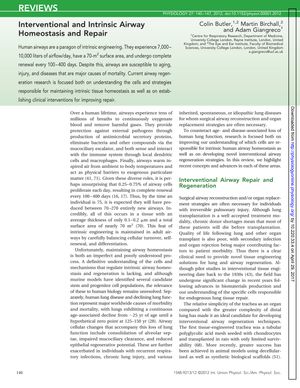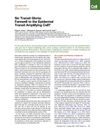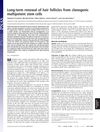Interventional and Intrinsic Airway Homeostasis and Repair
June 2012
in “
Physiology
”

TLDR The document concludes that more research is needed to understand airway repair and to improve tissue engineering for lung treatments.
The 2012 document reviews research on airway homeostasis and repair, highlighting the human airways' ability to renew themselves every 100-400 days and the challenges in understanding this process. It discusses the identification of specific cells and mechanisms responsible for maintaining airway integrity, the use of animal models to find stem and progenitor cells, and the success of tissue-engineered tracheal transplants. The review emphasizes the need for further research to optimize tissue engineering for clinical use and to understand the roles of different cell populations in airway repair. It also explores the potential of various cell types, including type 2 pneumocytes, bronchioalveolar stem cells, and keratin-expressing basal cells, in lung regeneration. The document calls for more research to clarify the specific cells involved in alveolar repair, the concept of stemness, and the regulation of stem and committed progenitor cell functions, especially for interventional lung repair. Future research directions include identifying molecular markers for human airway stem and committed progenitor cells, characterizing their roles in lung maintenance and repair, and understanding the signaling pathways that control their activity.


